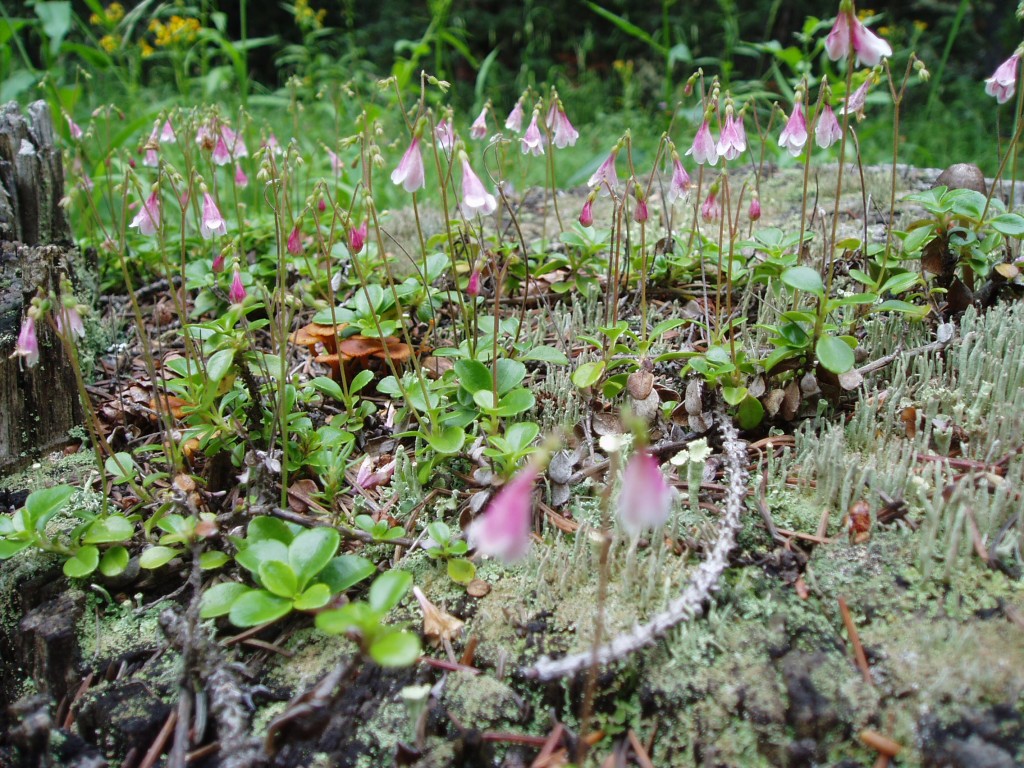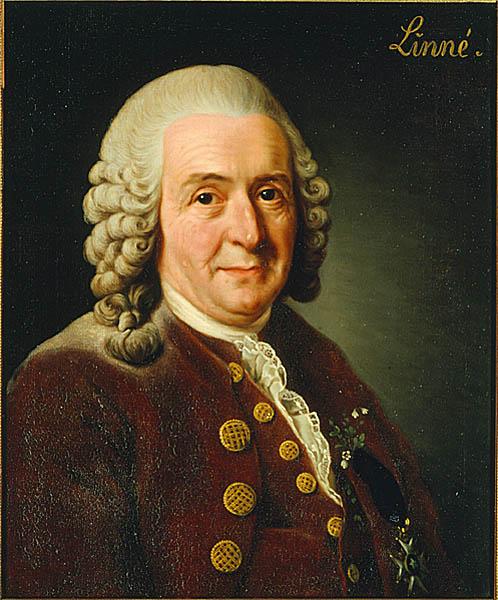An event of tremendous biological import took place in my life last weekend. And no, it wasn’t the 300 lb. black bear that wandered through our camp (although that was of tremendous import in that particular moment). No, an event I’ve been hoping and waiting for for many long years took place. I finally found the twinflower, Linnaea borealis.
I have been looking for this flower for years, not least because it was Linnaeus’s (as in Carolus “Father of Taxonomy” Linnaeus) favorite flower in the world. Nearly every painting you see of him shows him clasping or otherwise displaying a pair of the dainty blossoms. They were on his coat of arms.
For years I’ve gazed at them in my flower books, hoping and waiting and trying to be patient for the day. That day was Saturday. My mushrooming buddy Johnny was there to see it, and he patiently endured five minutes of me exclaiming over the low mat of little pink flowers. I tried to sniff for the “light vanilla scent” one of my books advised me they would have, but I could detect nothing. I don’t care. They are awesome.
Twinflowers are in the Honeysuckle family, the Caprifoliaceae (Kap’-ri-fo-lee-ase’-ee-ay). The Honeysuckle family is notorious for producing flowers in . . . you guessed it . . . pairs. The sweet honeysuckle blossoms of southeast Tennessee I remember from my youth came in pairs; the kids used to say you could pluck them and suck the nectar, though I don’t recall ever being successful at that. At the foray this weekend, someone came up to me to ask me about another plant he’d found with glossy twin black berries mounted on shiny red bracts; it was the bracted honeysuckle, or black twinberry, yet another member of the family. It was a Caprifoliaceae kind of weekend.
Twinflower is unusual because it grows in a low green mat rather than a woody shrub, like most honeysuckle. I even found a clump this weekend growing right on top of a tree stump (pictured above. You can also see the pixie stick form of Cladonia lichen mingling with the twinflower as if they were at a cross-kingdom cocktail party). Twinflower is, as its name implies, circumpolar in the northern hemisphere, which is why both Linnaeus and I can enjoy them, despite the fact that I’ve never been to Sweden, and he never experienced the Rocky Mountain High.




{ 2 comments… read them below or add one }
cool :)
These are gorgeous! Congratulations on the find.